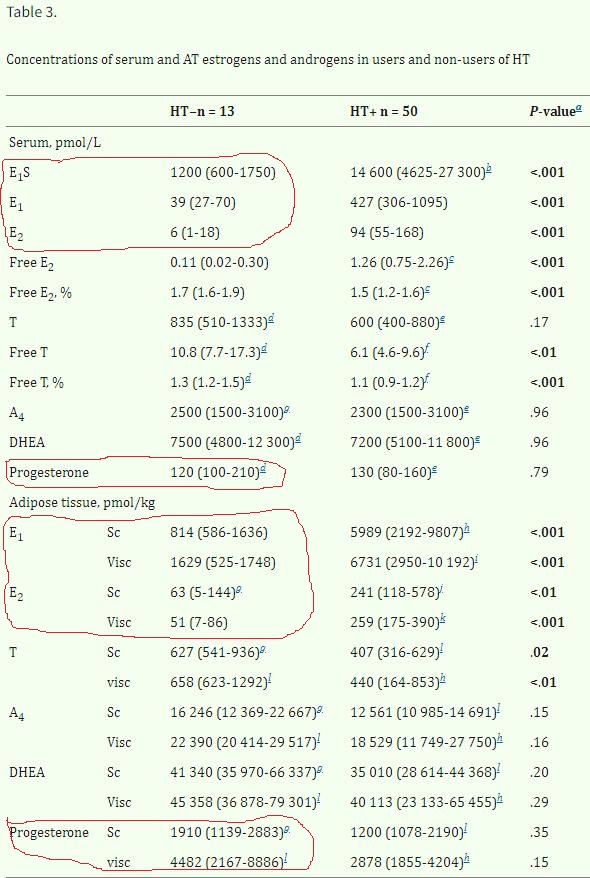Estrogen is NOT low in menopause, in fact there is estrogen dominance in blood and tissues
-
It looks like medicine is quietly starting to introduce the general public to the idea that menopause is NOT a condition of “estrogen deficiency”. What makes this study unique is that it measured the steroid levels in both serum/blood and tissues (adipose tissue in this case), which allows one to immediately see the discrepancy between serum and tissues, corroborating once again the claim Ray has made many times that serum steroid levels are NOT a good surrogate for tissue steroid levels. More specifically, the study clearly shows that tissue levels of estradiol are an order of magnitude higher in tissues than in serum, while tissue levels of of progesterone and estrone are several orders of magnitude higher in tissues than in serum. Despite the study being focused on the changes of steroid levels as a result of estrogenic HRT, as a control group it also included a group of women who did not receive such HRT. The results are quite clear. Namely, the absolute levels of the major estrogens estrone (E1), estrone sulfate (E1S) and estradiol (E2) are NOT low in either the serum or (adipose) tissues of those women. In fact, if you check Table 3 below from the study (screenshot included, with relevant data circled in red by me) it is clearly visible that all those major estrogen levels are within the normal range, not below the lower limit of normal or even undetectable (as we are often told by doctors is the case for menopausal women). Progesterone is also within the normal range, however it is very close to the lower limit of the normal range when measured in serum. However, as has been shown by many studies, it is not the absolute levels of estrogens and progesterone that matter in regards to systemic endocrine balance but their ratios. In other words, the well-known progesterone/estrogens ratio. It has been widely publicized and observed experimentally, that for optimal female health the ratio should be in the 200-500 range. Anything below 100, is considered a state of relative estrogen dominance and such low ratio has already been observed in virtually all cases of ER+ breast cancer patients. Well, one can easily see that in these “healthy” menopausal women (without cancer), the progesterone/estrogens ratio is well below 100 in both serum and tissues. More specifically, the progesterone/estrogens ratio in serum is ~16 (120 / (6 + 39*0.04)), in subcutaneous adipose tissue the ratio is ~20 (1910 / 63 + (814 * 0.04)), and in visceral adipose tissue the ratio is ~38 (4482 / (51 + (1629 * 0.04)). In other words, both serum and tissues of “healthy” menopausal women display severe estrogen dominance! The reason I am putting “healthy” in quotes is that such severe estrogen dominance makes them most certainly not healthy and had they not been menopausal, the discovery by their doctor of such state of severe estrogen dominance would have triggered a referral to an endocrine specialist and likely a prescription for a synthetic progestin (instead of bioidentical progesterone) in order to increase progesterone signalling and thus offset their severe estrogen dominance. In light of the study findings, the fact that estrogenic HRT is making a serious comeback as a result of pharma-sponsored doctors ignoring the findings of the WHI studies, is nothing short of a tragedy and likely to further exacerbate the already compromised endocrine health of menopausal (and non-menopausal) women around the world.
https://pubmed.ncbi.nlm.nih.gov/38986008/
